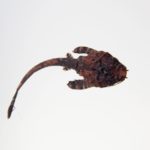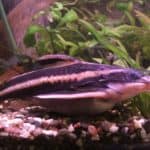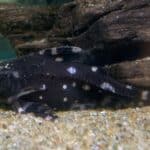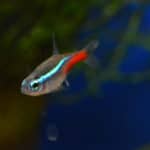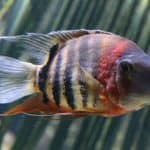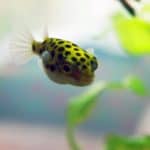Are you looking for a fish that’s a little out of the ordinary? If yes, you might want to consider the Twig Catfish. These freshwater species get their name from their long, thin snout and stick-like body. But don’t let that fool you – the Twig Catfish is a lively and interesting creature that can make a great addition to your home aquarium.
In this article, we’ll cover everything from Twig Catfish care to diet and gender differences. By the end, you’ll be an expert on everything Twig Catfish!
Species Summary
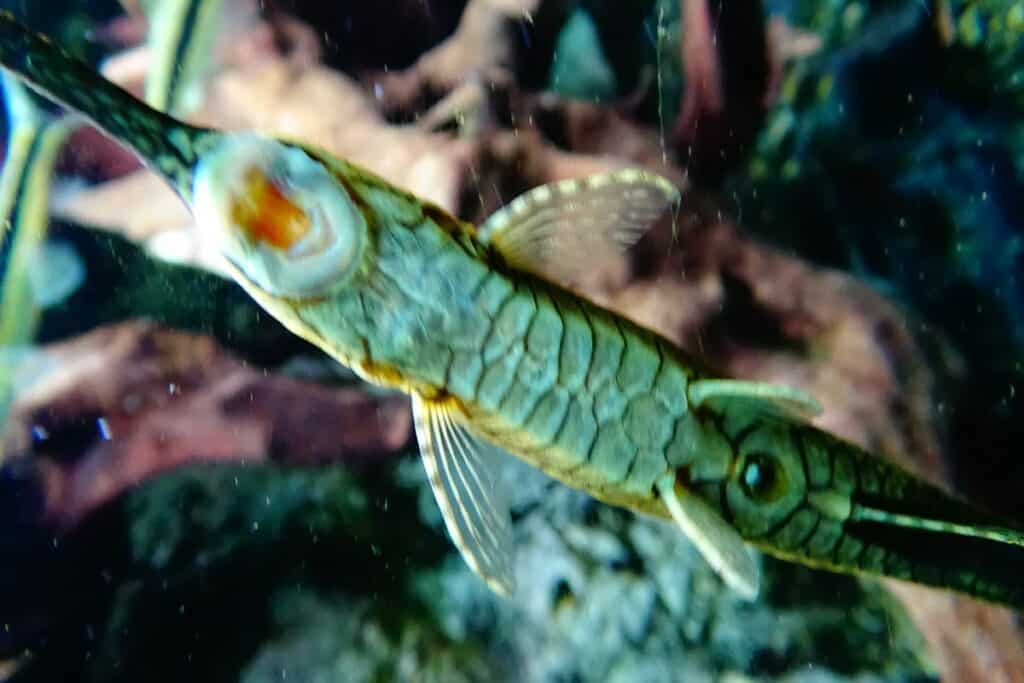
The Twig Catfish is a tropical freshwater catfish belonging to the Loricariidae (plecos) family. These catfish are found all over South America, in Argentina, Bolivia, Brazil, Colombia, Peru, and other countries.
They are bottom-dwellers that prefer slow-flowing habitats, such as streams and flooded forest areas. You’ll often find these fish hiding among vegetation, dry leaves, roots, and driftwood in dark, tannin-rich waters, but they can also be found in clear waters.
The common name Twig Catfish comprises different species of the genus Farlowella, but all have a similar look and care requirements.
Twig Catfish are hardy fish that can adapt to a wide range of water parameters, making them a good choice for both experienced and beginner aquarists. They’re also a good size for community tanks.
Twig Catfish Care Guide
The Twig Catfish is a hardy and easy-to-care fish, but that does not mean that it does not require some special care and attention. This fish has its own unique set of behaviors and habits that you will need to be aware of in order to provide the best possible care.
Tank Size
While they’re not the most active fish, twig catfish still need a bit of room to swim, so they should be kept in an aquarium that’s at least 21 gallons. If you’re planning on keeping more than one fish, you’ll need an even larger tank.
Tank Mates
This species of fish gets along well with other fish, making it a great choice for those who want to create a diverse underwater world. The Twig Catfish is also tolerant of its congeners, meaning it can be kept in a group without any problems.
When kept in a group, these fish will share the same hiding place during the day and can often be seen vigorously vying for space. These competitions are harmless and simply add to the Twig Catfish’s fun and active personality.
Tetras, Dwarf Cichlids, Rasbora, Danios, Oto Catfish, Corydoras, and Plecos are excellent tankmates for Twig Catfish.
Same Species Tanks
This fish is rarely used as a single species in any assembly, but it can make a great addition to a well-decorated aquarium.
Water Parameters
The Twigle Catfish is a hardy fish that can tolerate a wide range of water parameters. Despite its resilience, the Twig Catfish is susceptible to pollutants in the water and the accumulation of organic matter in the tank. For this reason, it’s important to keep a close eye on your fish’s environment and make sure the water is clean and well-oxygenated.
The perfect temperature for keeping the Twigle Catfish in an aquarium is 70 to 82 degrees Fahrenheit. The ideal pH range is between 6.0 to 7.2. The fish is also tolerant of a wide range of water hardness levels.
What to Put in Their Tank
Just like any other aquatic animal, Twigle Catfish need a heater and filter in their tank to stay healthy. The filter should be the right size to create a low to moderate flow. These fish don’t like bright lights, so keep the lighting low or use floating plants for cover.
Since they’re a fairly rustic species, Twigle Catfish can inhabit different aesthetic styles, from Amazonian themes to Asian and African ones.
In addition, having a tank that mimics the animal’s habitat conditions is a must and incredibly beneficial. For Twig Catfish, this means using a fine sand substrate with plenty of driftwood and a bed of dry leaves. Make sure that the tank is well decorated and forms hiding places and territories.
Also, don’t forget to use a soft substrate with no edges and angles that could hurt the fish.
Common Diseases
These little guys are incredibly disease-resistant, so as long as you keep the water quality in your tank up and give them a good diet, they shouldn’t have any problems.
Of course, you should always quarantine new fish before adding them to your main aquarium, just to be safe. But all in all, Twig Catfish are low-maintenance pets that can bring a lot of enjoyment to your life.
Food and Diet
These fish are omnivorous, feeding mainly on both plants and animals.
In the wild, this catfish feeds mainly on algae. Its consumption will depend on the availability of food in the natural habitat. In an aquarium, these fish readily accept all types of food.
This fish may not readily accept dry foods in an aquarium, and alternative foods such as fresh vegetables should be given. Once dry foods are taken, feed them plant-based and spirulina foods regularly.
Twig Catfish are always hungry, so it’s important to set a time to feed them and always to try to give them an amount that can be consumed quickly.
Lifespan
In the wild, these fish are often preyed upon by other animals and can also fall victim to diseases and environmental hazards. As a result, their lifespan in the wild is often shorter than it is in captivity.
But a twig catfish can live for more than five years in an aquarium with all the correct parameters kept stable and with an ideal diet.
Appearance
This fish has a slender body with a pronounced snout and a unique brownish coloration with a dark lateral stripe running from the tip of the snout to the caudal peduncle.
Size
The Twig Catfish can quickly grow more than eight inches in length when well cared for and fed.
Behavior and Temperament
The Twig Catfish is a tropical fish species with peaceful behavior and is a perfect inhabitant of a regular community aquarium. They are very sedentary animals, staying hidden and motionless on submerged branches, where they camouflage themselves in this environment.
It is a species that does not form schools but presents itself with a gregarious habit by nature, so it will exhibit a more natural behavior when kept in a small group.
Breeding
This fish is oviparous, which means that they lay eggs rather than give birth to live young. The eggs are usually laid on open vertical surfaces like vegetation or submerged rocks, and the male fish will guard them until they hatch.
Gender Differences: Male vs Female
One of the most interesting things about the Twig Catfish is the fact that there are some pretty big differences between males and females.
The males of this species tend to have much larger and more pronounced odontodes. These small, sharp projections line the sides of the fish’s head and body. They’re thought to play a role in both defense and mating. Females, on the other hand, don’t usually have these larger odontodes.
Twig Catfish Fun Facts
● The name Farlowella is a tribute to William Gilson Farlow, a famous American botanist at Harvard University, whose primary job was to study algae, the favorite food of these fish.
● Morphological and molecular phylogenetic analyzes place the genus Farlowella as a sister genus of Sturisoma. This relationship is supported by sexual dimorphism and reproductive strategies, identical in both genders.
● This fish can be widespread in the aquarium hobby and is highly recommended for beginners; however, it is not regularly seen; it is resistant, attractive, and relatively long-lived.
● Desirable presence of numerous roots and driftwood in the aquarium since the species spends most of its time camouflaged and attached to them.
References.
Ferraris, C.J. Jr., 2003. Loricariidae – Loricariinae (Armored catfishes). p. 330-350. In R.E. Reis, S.O. Kullander and C.J. Ferraris, Jr. (eds.) Checklist of the Freshwater Fishes of South and Central America. Porto Alegre EDIPUCRS, Brasil.
Lopez, H.L., R.C. Menni and A.M. Miguelarena, 1987. Lista de los peces de agua dulce de la Argentina. Biologia Acuatica No. 12, 50 p. (Instituto de Limnologia “Dr. Raul A. Ringuelet”).
Oyakawa, O.T. and N.A. Menezes, 2011. Checklist dos peixes de água doce do Estado de São Paulo, Brasil. Biota Neotropica.
Nature Planet – Trilhando os caminhos da natureza – Ricardo Britzke.

